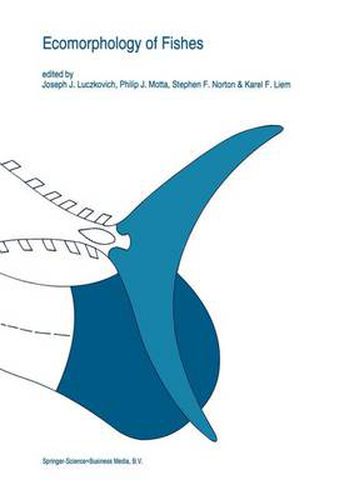Readings Newsletter
Become a Readings Member to make your shopping experience even easier.
Sign in or sign up for free!
You’re not far away from qualifying for FREE standard shipping within Australia
You’ve qualified for FREE standard shipping within Australia
The cart is loading…






This title is printed to order. This book may have been self-published. If so, we cannot guarantee the quality of the content. In the main most books will have gone through the editing process however some may not. We therefore suggest that you be aware of this before ordering this book. If in doubt check either the author or publisher’s details as we are unable to accept any returns unless they are faulty. Please contact us if you have any questions.
Ecomorphology is the comparative study of the influence of morphology on ecological relationships and the evolutionary impact of ecological factors on morphology in different life intervals, populations, species, communities, and evolutionary lineages. The book reviews early attempts at qualitative descriptions of ecomorphological patterns in fishes, especially those of the Russian school. More recent, quantitative studies are emphasised, including multivariate approaches to ecomorphological analysis, the selection of functionally important ecological and morphological variables to analyze, an experimental approach using performance tests to examine specific hypotheses derived from functional morphology, and the evolutionary interpretations of ecomorphological patterns. Six major areas of fish biology are focused on: feeding, sensory systems, locomotion, respiration, reproduction, and phylogenetic relationships. The 18 papers in the volume document: (1) how the morphology of bony fishes constrains ecological patterns and the use of resources; (2) whether ecological constraints can narrow the niche beyond the limits imposed by morphology (fundamental vs. realized niche); (3) how communities of fishes are organized with respect to ecomorphological patterns; and (4) the degree to which evolutionary pressures have produced convergent or divergent morphologies in fishes. A concluding paper summarizes ecomorphological research in fishes and points out taxa that are underrepresented or are especially promising for future research.
$9.00 standard shipping within Australia
FREE standard shipping within Australia for orders over $100.00
Express & International shipping calculated at checkout
This title is printed to order. This book may have been self-published. If so, we cannot guarantee the quality of the content. In the main most books will have gone through the editing process however some may not. We therefore suggest that you be aware of this before ordering this book. If in doubt check either the author or publisher’s details as we are unable to accept any returns unless they are faulty. Please contact us if you have any questions.
Ecomorphology is the comparative study of the influence of morphology on ecological relationships and the evolutionary impact of ecological factors on morphology in different life intervals, populations, species, communities, and evolutionary lineages. The book reviews early attempts at qualitative descriptions of ecomorphological patterns in fishes, especially those of the Russian school. More recent, quantitative studies are emphasised, including multivariate approaches to ecomorphological analysis, the selection of functionally important ecological and morphological variables to analyze, an experimental approach using performance tests to examine specific hypotheses derived from functional morphology, and the evolutionary interpretations of ecomorphological patterns. Six major areas of fish biology are focused on: feeding, sensory systems, locomotion, respiration, reproduction, and phylogenetic relationships. The 18 papers in the volume document: (1) how the morphology of bony fishes constrains ecological patterns and the use of resources; (2) whether ecological constraints can narrow the niche beyond the limits imposed by morphology (fundamental vs. realized niche); (3) how communities of fishes are organized with respect to ecomorphological patterns; and (4) the degree to which evolutionary pressures have produced convergent or divergent morphologies in fishes. A concluding paper summarizes ecomorphological research in fishes and points out taxa that are underrepresented or are especially promising for future research.